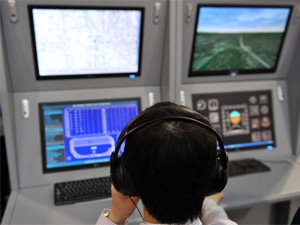
Government's push to spruce-up ICT in the aviation sector has turned the spotlight on how delayed radio frequency spectrum affects SA's aviation sector, which aims to maintain high air traffic communication standards.
Deputy minister of telecommunications and postal services Hlengiwe Mkhize this week outlined the need to boost the skills pool as well as infrastructure for ICT in aviation.
Speaking at a ministerial roundtable on aviation transformation in Kempton Park, Mkhize said SA's air traffic management would also be affected by additional spectrum allocated through government's National Spectrum Band Plan, which should be coordinated by the Independent Communications Authority of South Africa (ICASA). "The aviation industry is heavily reliant on the frequency spectrum resources allocated to it by the International Telecommunication Union."
However, spectrum allocation has been beset by delays, with policy directives on the licensing of spectrum yet to be issued. The Department of Telecommunications and Postal Services (DTPS) - then the Department of Communications - noted in May that, while it is "acutely aware of the urgency of releasing suitable spectrum", it needed further engagement with ICASA, mobile operators and other relevant stakeholders on the full reasons for the delay.
Mkhize urged the aviation industry and the telecoms sector to "continue collaborative efforts to ensure the research and development programmes take into consideration the communication and technology needs".
Safety objectives
Meanwhile, Thabani Mthiyane, CEO of the Air Traffic and Navigation Services (ATNS) Company of SA, says deploying leading technology is important to ensuring air traffic safety in the region.
He noted the ATNS training academy would continue to upgrade its training programmes in line with changing global technology and safety regulations. Earlier this year, the ATNS was awarded the International Air Transport Association's 2014 Worldwide Top Regional Training Partner accolade.
Mkhize says the DTPS is "fully aware of the risks associated with poor communications facilities in the aviation industry, which include navigation, surveillance and air traffic management. Communication technology in this sector forms part of the safety strategies for individual flights, military flights, and choppers and commuter passengers."
She said the adoption of technologies that use "less frequency spectrum, while ensuring adherence to global standards" must also be pursued, as radio frequency spectrum remains "an important national scarce resource which must be utilised to advance the better life of our people".
Share